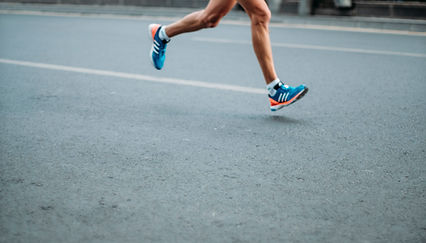Shin Splints
What is shin pain and how does it affect you?
Lower leg pain is referred to as "shin splints" when it happens on the outside of the leg (anterior shin splints) or on the inside of the leg (medial/posterior shin splints). It's officially known as Medial Tibial Stress Syndrome (MTSS), and it's the bane of many runners and sportsmen. It's commonly defined as "too much, too soon," with a focus on runners who increase their mileage too quickly or seasoned runners who abruptly modify their workout routine, such as transitioning from flat ground to hills.
What exactly is a "shin splint?"
Regrettably, health professionals have yet to reach an agreement.
It is, according to some:
-
as a result of minor tears in the muscle that pulls away from the bone
-
inflammation of the tissue that wraps around the tibia's sheath (periosteum)
-
musculoskeletal inflammation
-
or a mix of the above
-
Fortunately, they're all treated the same way!
Signs and symptoms
-
Pain and/or inflammation down the inside of the shin — it could be a razor-sharp aching, a dull ache, or a throbbing sensation.
-
In the early phases of an injury, pain during exercise may feel better as you warm up.
-
Exercise-induced pain
-
Pain in the middle of the night or first thing in the morning.
-
Touching the inside of the shins is sensitive.

What else could it be if it's not shin splints?
-
Shin pain isn't usually a sign of shin splints, and it could indicate something else.
-
Compartment Syndrome – a pressure created by the swelling of muscles within a closed compartment. Leg pan, strange nerve sensations, and muscle weakness are all symptoms.
-
Stress fracture – a fracture in the bone that isn't complete. This is a more dangerous condition than shin splints, and it is generally identified by a specific location of discomfort rather than the broad pain of shin splints.
Common causes:
-
Overpronation is a condition in which a person's (rolling in of feet)
-
Muscle imbalance/weakness
-
Activities with a big impact
-
Unsuitable footwear
-
During running, an excessive amount of stress is applied on one leg (cambered roads or always running in the same direction)
-
Being overweight is a problem.
-
In most cases, one leg is more painful than the other, and it's usually the person's dominant leg. For example, if you're right-handed, you're probably right-footed, which is the one that aches the most.
How do we fix it?
-
Stop sprinting (for the short term while you rehab the legs)
-
While you recover, modify your activities or reduce the intensity of your training by moving to low-impact activities like swimming or cycling.
-
It goes without saying, but icing your shins will help reduce inflammation.
-
Anti-inflammatories
-
Running over softer, flat surfaces.
-
Warm up completely.
-
Legs must be strengthened in order to cope with the demand of your activity
Why is Podiatry crucial in the treatment of shin pain?
Our Podiatrist will assist you in assessing and diagnosing the core cause of your shin discomfort so that you can be pain-free depending on the conditions that are causing it!
A Podiatrist can help you get rid of shin splints pain by providing the following treatments as part of your consultation:
-
Biomechanical evaluation - A look at how you walk and run to see if there are any underlying issues that are causing your shin pain.
-
Soft tissue mobilisation - This can be done with dry needling or massage on your shin and calf to help loosen up the muscles and speed up the recovery process.
-
Strengthening and stretching program - Once your symptoms have subsided, you can gradually return to doing exactly what you want!
-
Orthotics - Orthotics can assist in addressing mechanical issues that may be the source of shin pain.
-
Advice on footwear - To assist you in finding the appropriate shoes for your foot type, mechanics, and loading patterns.
Shin pain can be exasperating, even in everyday tasks, but the good news is that it responds effectively to the right therapy!